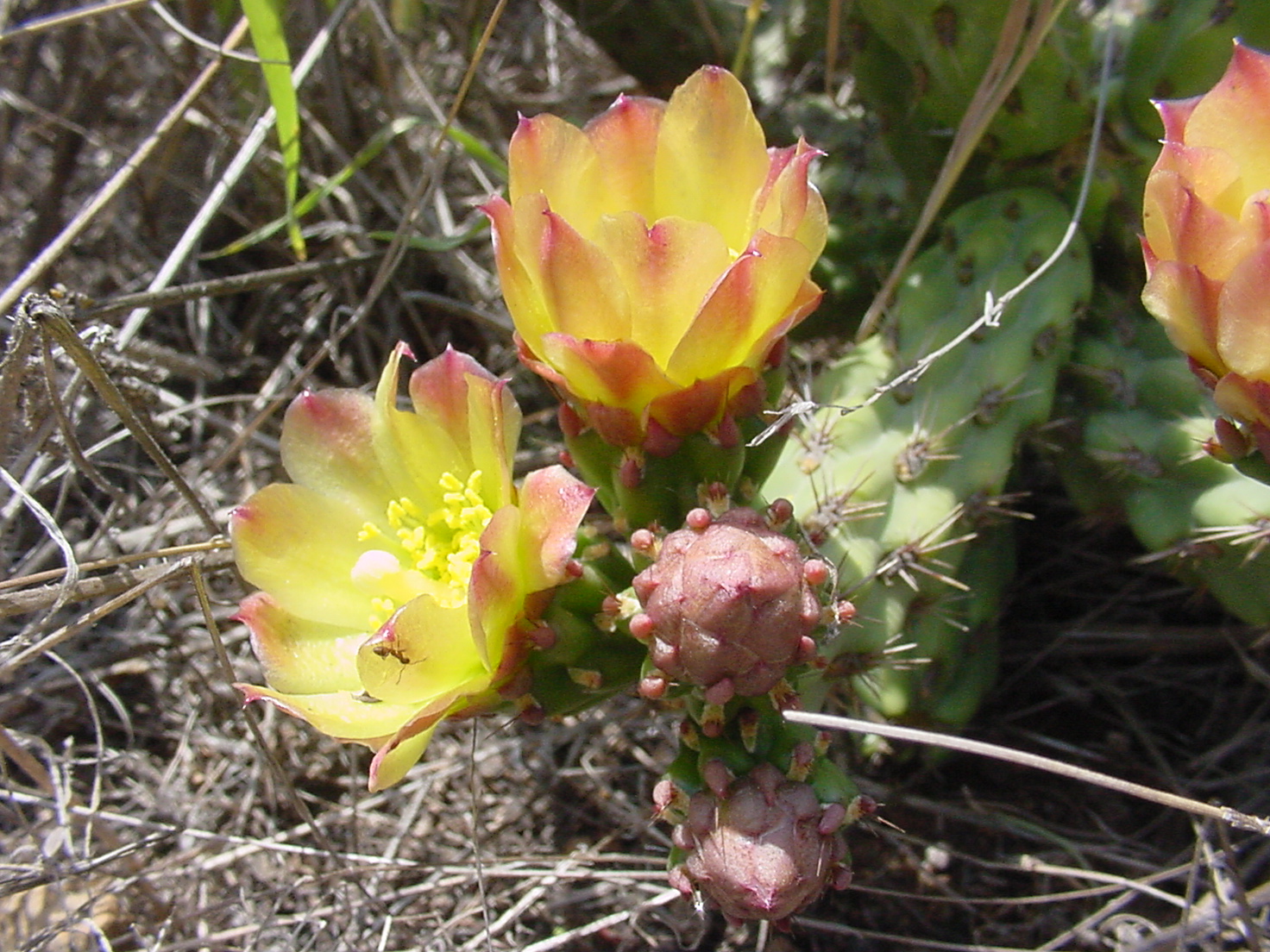
Snake Cholla
Cylindropuntia californica var. californica
Cylindropuntia californica var. californica
Photo Credit: USFWS: John Martin
| Historically present | |
| Between 2000 and | |
| Last 10 years |
Goal: Maintain, enhance and restore coastal sage scrub on Conserved Lands in the MSPA that supports or has the potential to support VF species (i.e., cliff spurge, Palmer's goldenbush, San Diego barrel cactus, snake cholla, Blaineville's horned lizard, California gnatcatcher, San Diego black-tailed jackrabbit) and to incidentally benefit a diverse array of other species (e.g., San Diego thornmint, willowy monardella, Hermes copper, Quino checkerspot, coastal cactus wren) so that the vegetation community has high ecological integrity, and these species are resilient to environmental stochasticity, catastrophic disturbances and threats, such as very large wildfires, invasive plants and prolonged drought, and will be likely to persist over the long term (>100 years).
Management units: 1, 2, 3
In 2021, inspect occurrences of coastal sage scrub MSP VF plant species (cliff spurge, Palmer's goldenbush, San Diego barrel cactus, and snake cholla) on Conserved Lands using the regional IMG monitoring protocol to record abundance and collect habitat and threat covariate data to determine management needs.
| Action | Statement | Action status | Projects |
|---|---|---|---|
| IMP-1 | Based upon occurrence status and threats, determine management needs including whether routine management or more intensive management is warranted. | on hold | |
| IMP-2 | Submit project metadata, monitoring datasets and management recommendations to the MSP Web Portal. | on hold |
| Criteria | Deadline year |
|---|---|
| Surveys Completed 2021 with Management Recommendations | 2021 |
| Threat Name | Threat Code |
|---|---|
| Altered fire regime | ALTFIR |
| Human uses of the Preserves | HUMUSE |
| Invasive plants | INVPLA |
| Urban development | URBDEV |
| File name | Lead Author | Year | Type |
|---|---|---|---|
| Cactus Wren habitat restoration on San Diego National Wildlife Refuge | Martin, John | 2019 | powerpoint presentation |
| DRAFT EXISTING CONDITIONS REPORT for the OTAY RANCH PRESERVE | 2009 | report |
From the south coast of California into Baja California, Mexico [1].
Three occurrences on Conserved Lands in MUs 2 (Florida Canyon) and 3 (East Otay Mesa).
None [2].
Coastal sage scrub and chaparral, oak scrub, juniper woodlands, and grassy rolling hills [3]. Usually found in sandy soils. Elevation range 30-150 meters [1].
Cactaceae family [3]. Synonyms include Opuntia californica var. californica and Opuntia parryi var. serpentina [2].
Perennial stem succulent [2].
Bloom period April-May [2].
No information.
Threatened by development and off road vehicles [2].
[1] Baker, M., B. D. Parfitt, and J. Rebman 2016. Cylindropuntia californica var. californica, in Jepson Flora Project (eds.) Jepson eFlora, http://ucjeps.berkeley.edu/cgi-bin/get_IJM.pl?tid=80401, accessed on September 02, 2016.
[2] CNPS, Rare Plant Program. 2016. Inventory of Rare and Endangered Plants (online edition, v8-02). California Native Plant Society, Sacramento, CA. http://www.rareplants.cnps.org, accessed 02 September 2016.
[3] Pinkava, D.J., and R., Puente. 2013. Cylindropuntia californica. The IUCN Red List of Threatened Species 2013: e.T151936A578279. http://dx.doi.org/10.2305/IUCN.UK.2013-1.RLTS.T151936A578279.en. Downloaded on 02 September 2016.